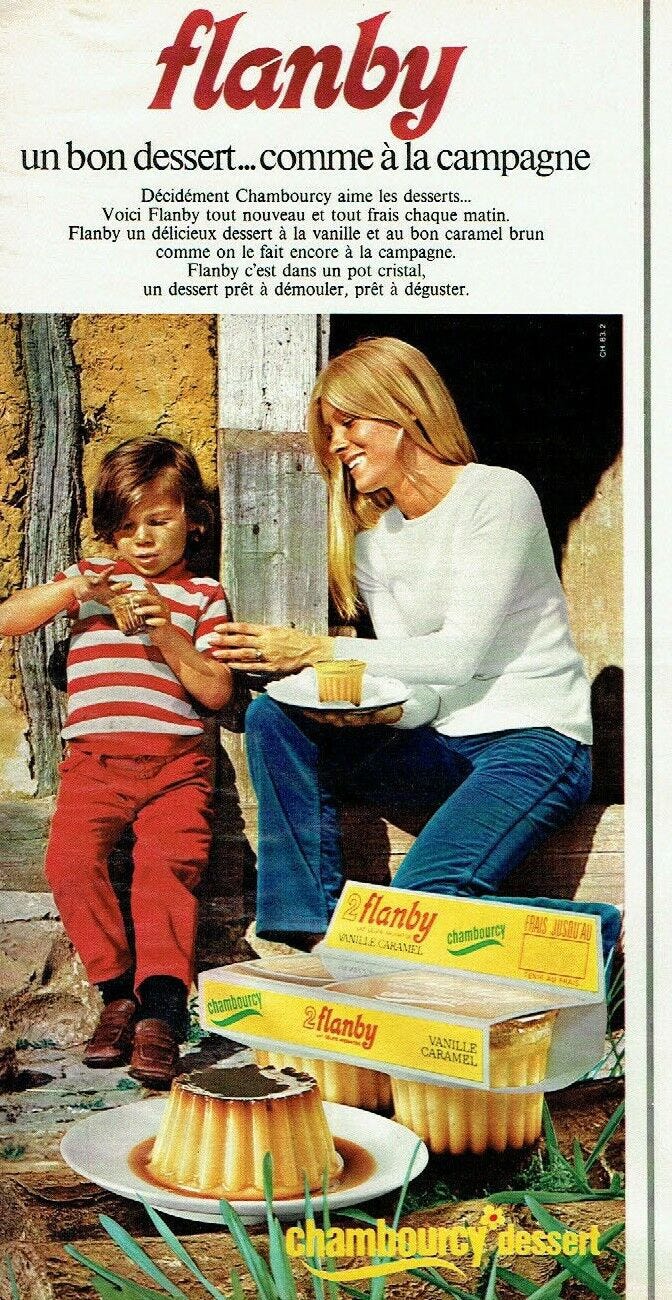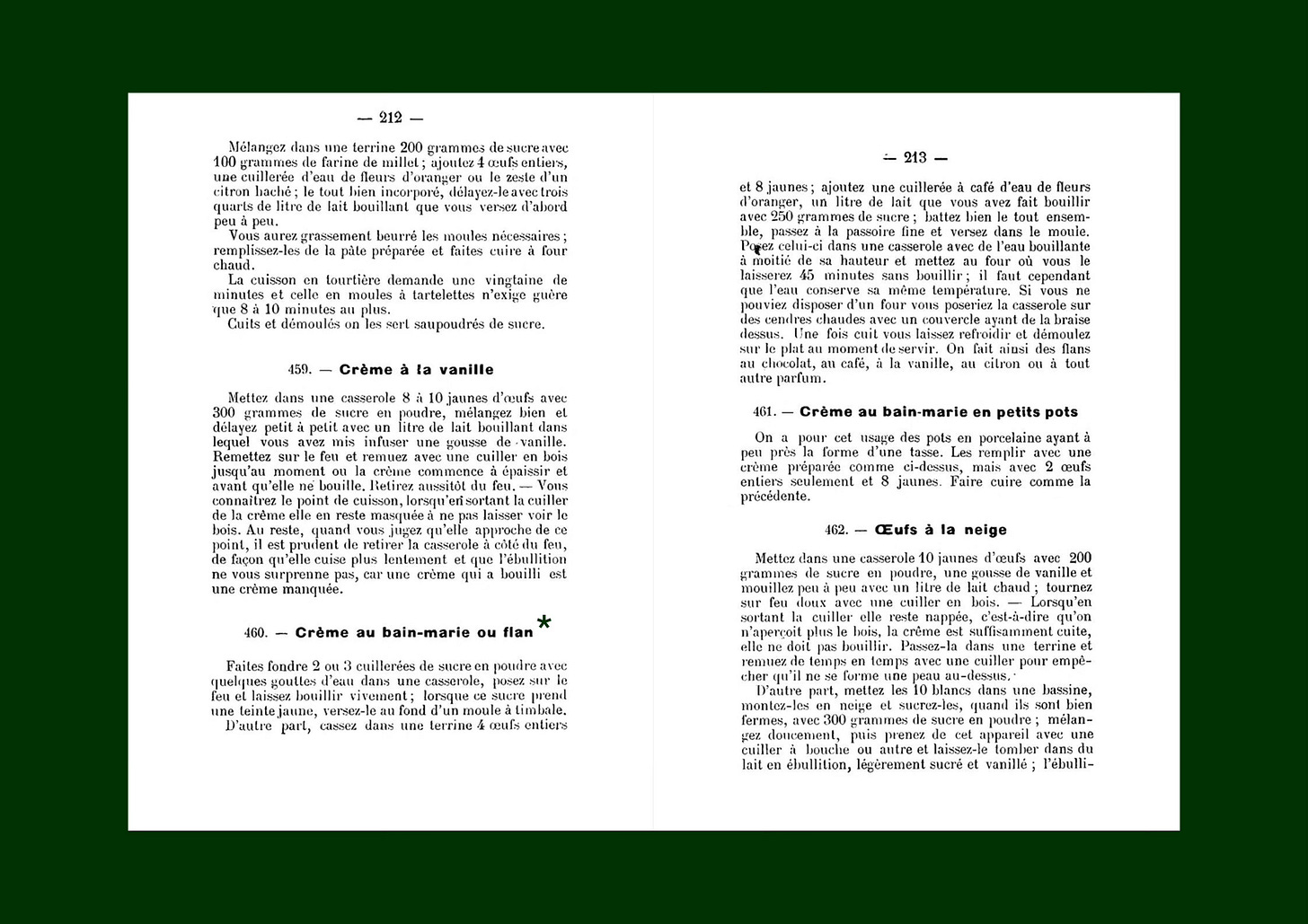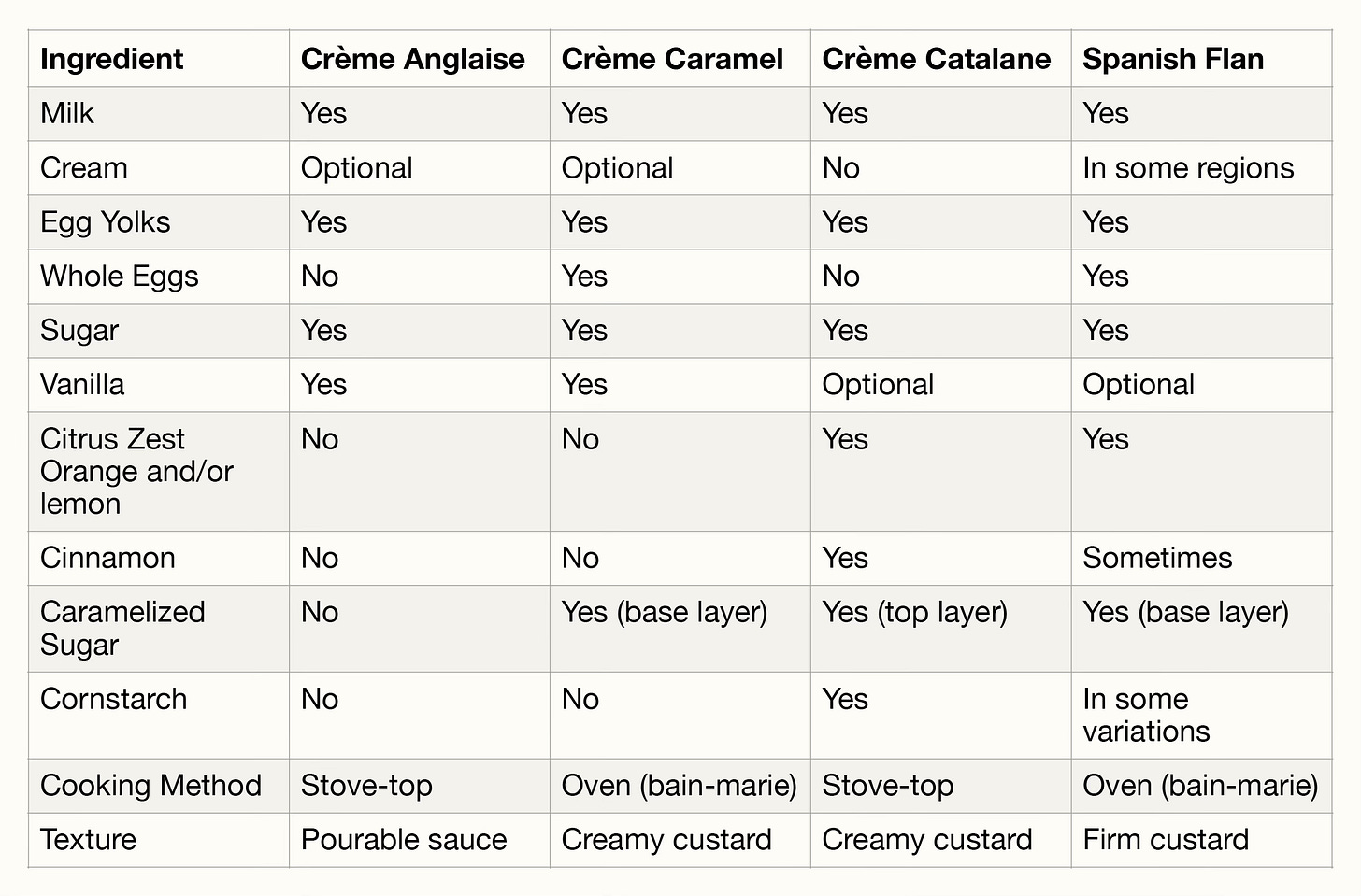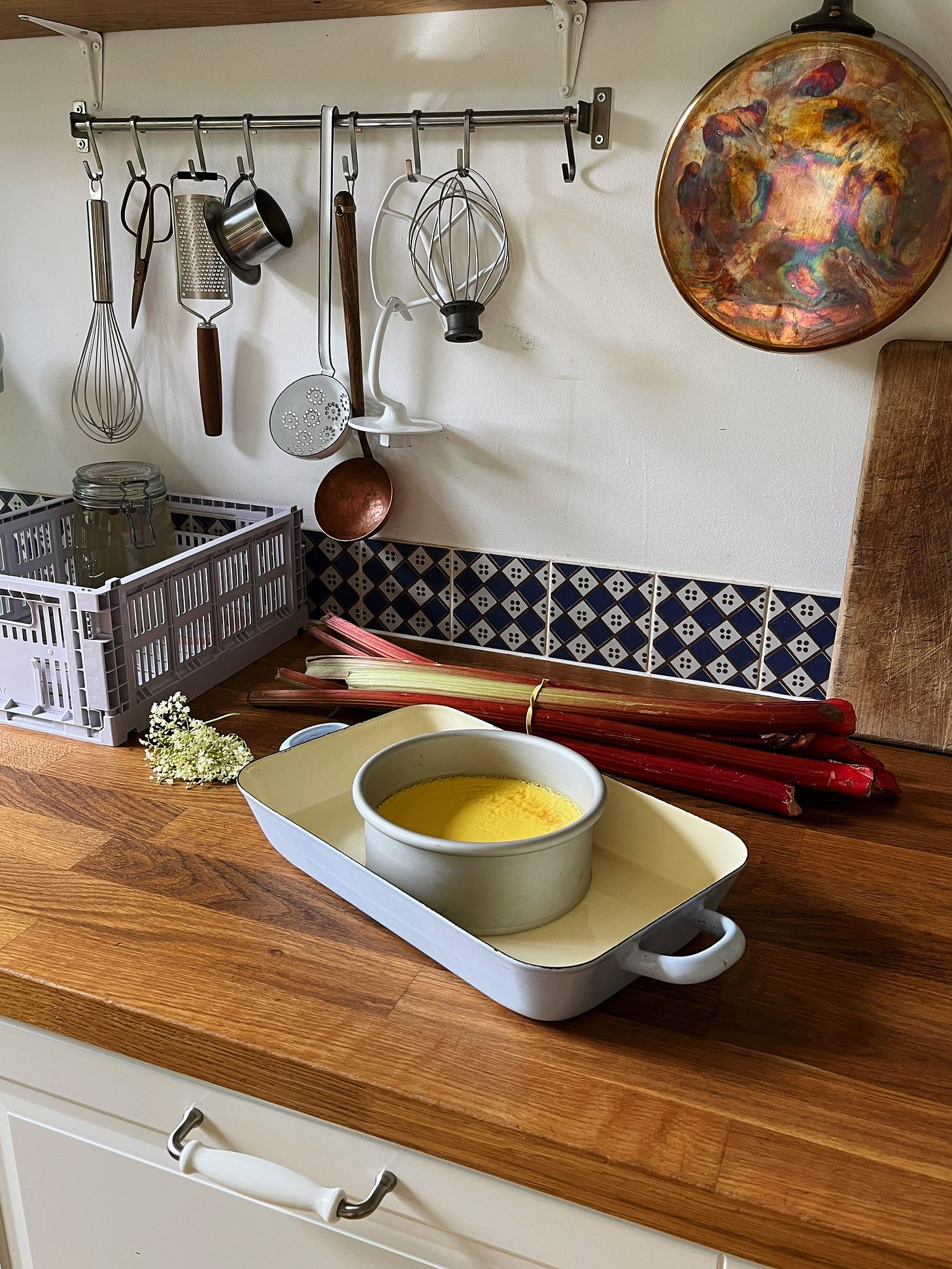Even though I bake a lot, I am not an avid dessert eater. In France, when you are not ordering the complete menu (starter, main course, cheese, and dessert) at a restaurant, you usually have the option to choose either a starter and main course or a main course and dessert. I typically choose the first option, unless we are eating at a bistro. That is when I order crème caramel as a dessert without thinking twice.
There is a debate about the actual origin of this dessert. Custard-like desserts have existed since medieval Europe, but the crème caramel we know today appeared around the 19th century in France and Spain. According to the book Dictionnaire de la gourmandise, it was first documented in La Cuisinière Provençale by Jean-Baptiste Reboul, published in 1897, by the name crème au bain-marie or flan.
This dessert gained popularity, and many countries began adapting their own versions of crème caramel. In France, every region has its own variation. In Croatia, they make rožata, which is traditionally flavoured with rose liqueur, though I have also seen recipes that infuse the dairy with orange peel. In South America, we find versions made with condensed milk, while in Southeast Asia, coconut milk is commonly used. In Japan, they call it Purin. The list is endless.
Simple ingredients and easy preparation made it an easy dessert to produce on a large scale. During the 1950s and 1960s, industrial versions began appearing in supermarket aisles across Europe, as part of the post-war boom in convenience foods. Even in Iran, factory-produced pots of crème caramel have become well-known and widely enjoyed by the population.
There is also flan pâtissier, which is a baked custard tart made with pastry cream in a shell, often using pâte brisée or pâte sablée. This type of baked custard is similar to other custard-based tarts, such as baked custard tart, pastel de nata, and egg tart.
Also, the word flan is sometimes used to refer to crème caramel, depending on the region. For example, in Spain, Latin America, and some parts of the US and France, it refers to crème caramel.
The main ingredients are eggs, sugar, milk, and cream. Some recipes use only egg yolks for a richer, creamier texture and a brighter colour (egg yolks are 27% fat), while others use whole eggs for a firmer set. Some use only milk, while others combine milk and cream. In the end, it all comes down to the texture you aim for. I prefer using a mix of cream and milk for a creamier texture, and a mix of whole eggs and yolks for a firmer set.
Here is a glimpse of various types of baked custards:
(This chart does not showcase all of the baked custards by any means.)
Now, let us jump to the recipe!
The recipe
Elderflower Crème Caramel
-
Ingredients
for the cream
250 grams milk
250 grams cream (min. 35% fat)
1 egg + 4 egg yolks
65 grams sugar
~ 3 heads of Elderflower*
-
for the dry caramel
100 grams sugar
-
*If you're not familiar with this flower, be sure to be accompanied by a professional when harvesting.
-
Method
We start by cold-infusing the cream and milk. Pour the milk and cream into a jar, then add the flowers. Make sure there are no insects on the flowers before adding them. Gently submerge the flowers in the liquid, then cover and refrigerate for 16 hours or overnight.
When ready to make your cream, prepare a 16 cm mould and preheat the oven to 145°C (fan-forced).
Place the sugar in a small pan and heat it over medium heat until it melts and turns golden brown. Be careful not to burn the caramel. Once the sugar has melted and has reached the desired colour, pour the caramel immediately into the bottom of the mould. Let it sit for a few minutes.
In a medium bowl, whisk together the egg, egg yolks, and sugar until well combined. Set aside.
Gently heat the infused cream and milk in a saucepan until it begins to simmer. Slowly temper the egg mixture by adding the warm cream to the eggs in small amounts, whisking constantly. Once combined, strain the mixture through a sieve to remove any curdled bits and the flowers, then pour it over the caramel in the mold.
Place the mould in a deep baking pan and fill the pan halfway with boiling water (bain-marie). Bake for about 35 to 40 minutes, or until the custard has a slight jiggle in the center. Let it cool on the counter, then refrigerate overnight.
To unmold, place the mould in a deep baking dish and add a few millimetres of warm water, around 65°C. Let it sit for a few seconds, then carefully flip the crème caramel onto a plate. Decorate with elderflowers, if desired.
Noosh-e-Jaan, may it nourish your soul. x











It’s funny, I was at a community garden yesterday potting up some seedlings for a future event and saw the trees bursting with elderflowers, but left them alone bc I wasn’t sure what to do with them. I’m going back next week and now I now!